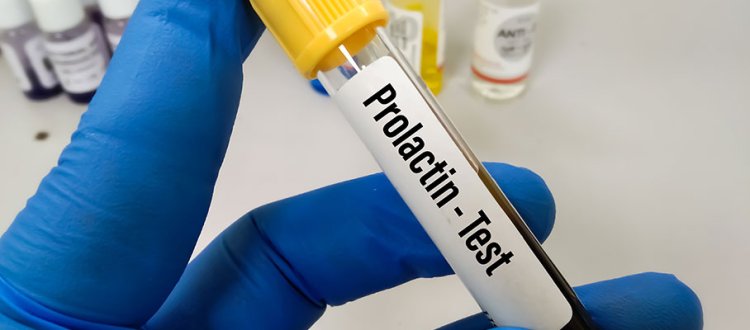How to Monitor Cabergoline Treatment
Share this Post to earn Money ( Upto ₹100 per 1000 Views )

Monitoring cabergoline treatment is essential for ensuring the medication's effectiveness and minimizing potential side effects. As cabergoline is primarily used for managing conditions like prolactinomas and Parkinson's disease, systematic and thorough monitoring practices are crucial for optimizing patient outcomes. This guide provides a comprehensive approach to monitoring cabergoline therapy, focusing on key assessments and best practices.
Cabergoline 0.5 mg is used to treat having too much of the hormone prolactin in your body. When women have high amounts of prolactin, they may produce extra breast milk or miss their periods, and it may be hard for them to get pregnant. Men with high amounts of prolactin may have symptoms like bigger breasts and less desire to be sexual. The ergot drug Cabergoline 0.25 mg stops the pituitary gland from releasing prolactin, which is what it does.
Initial Assessment and Baseline Measurements
Medical History and Physical Examination
Before starting cabergoline treatment, a thorough medical history and physical examination should be conducted. This includes evaluating:
- Symptoms: Assess the current symptoms related to elevated prolactin levels or Parkinson’s disease.
- Pre-existing Conditions: Identify any pre-existing conditions that may affect treatment or increase the risk of side effects.
Baseline Prolactin Levels
For patients with prolactinomas, it is crucial to measure baseline prolactin levels before initiating cabergoline. This baseline measurement will serve as a reference point to evaluate treatment efficacy and guide dosage adjustments.
Baseline Imaging Studies
Patients with prolactinomas should undergo baseline pituitary imaging (such as MRI) to evaluate the size and activity of the tumor. This imaging is crucial for assessing changes over the course of treatment.
Routine Monitoring During Treatment
Prolactin Levels
Regular monitoring of serum prolactin levels is essential to gauge the effectiveness of cabergoline. Prolactin levels should be checked:
- Every 3-6 Months: Typically, during the initial stages of treatment or when adjusting dosages.
- Less Frequently: Once stable, the frequency of monitoring may be reduced based on the patient’s response.
Pituitary Imaging
Follow-up pituitary imaging should be scheduled based on the patient’s initial response to cabergoline and any changes in symptoms. The frequency of imaging studies typically ranges from:
- Every 6-12 Months: During the first year of treatment.
- Annually: Once the tumor has stabilized or significantly reduced in size.
Side Effects Monitoring
Routine evaluation for potential side effects is crucial. This includes:
- Cardiovascular Health: Regular monitoring of blood pressure and heart function, especially for long-term users, to detect any signs of valve regurgitation or other cardiac issues.
- Neurological Symptoms: Assess for any changes in mood, cognition, or motor function. Regular neurological assessments are recommended for patients with Parkinson’s disease.
Adjusting Dosage Based on Monitoring
Adjustments for Efficacy
If prolactin levels do not decrease as expected, or if symptoms persist, the cabergoline dosage may need adjustment. This should be guided by:
- Prolactin Level Trends: Gradual decreases or stable levels may warrant dose adjustments.
- Clinical Response: Improvement in symptoms may indicate that the current dosage is effective.
Adjustments for Side Effects
If significant side effects are observed, dosage adjustments may be necessary. For instance:
- Reduced Dosage: If side effects are severe or unmanageable, the dosage may be reduced to minimize adverse reactions.
- Discontinuation: In cases where side effects are intolerable or pose a significant risk, discontinuation of cabergoline may be considered.
Long-Term Monitoring and Follow-Up
Ongoing Assessment
Long-term monitoring is essential to ensure continued effectiveness and safety:
- Annual Check-Ups: Regular annual visits to assess overall health, disease management, and medication effects.
- Regular Blood Tests: To monitor for any potential long-term side effects and ensure consistent drug levels.
Patient Education
Educating patients on the importance of monitoring and adherence to the treatment plan is vital. This includes:
- Recognizing Side Effects: Patients should be informed about potential side effects and instructed to report any new or worsening symptoms.
- Adherence: Emphasize the importance of following prescribed dosages and attending scheduled follow-up appointments.
Special Considerations
Pregnancy and Breastfeeding
For pregnant or breastfeeding women, close monitoring is essential, as cabergoline may affect fetal development and milk production. Alternative treatments should be discussed with a healthcare provider.
Elderly Patients
Elderly patients may require more frequent monitoring due to potential age-related changes in drug metabolism and increased susceptibility to side effects.
Patients with Liver or Kidney Impairment
Patients with liver or kidney impairment need tailored monitoring to account for altered drug metabolism and excretion. Regular function tests and dosage adjustments are necessary.
Conclusion
Monitoring cabergoline treatment involves a multifaceted approach, including initial assessments, routine monitoring of prolactin levels, imaging studies, and regular evaluations for side effects. By adhering to these practices, healthcare providers can optimize treatment effectiveness and patient safety.







